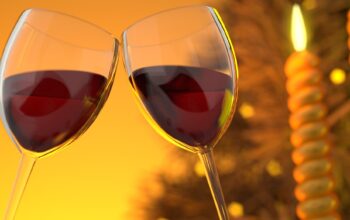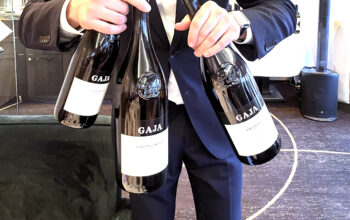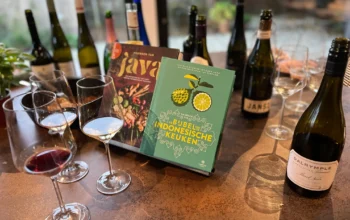That our country has an awful lot to offer in culinary terms was not always obvious, but the Netherlands has put itself well on the map in recent decades. Even in the far north, in Groningen, there is a lot to taste. Including wine!
TEXT KATJA BROKKE PHOTOGRAPHY KATJA BROKKE, HANZEMAG-BOLDERDIJK, CORA WESTERINK, STELLA DEKKER AND JUR BOSBOOM
It is evening when I get a call from Barbara Geertsema-Rodenburg of 't Ailand in Lauwersoog in Groningen. 't Ailand is a fishing workshop and restaurant owned by Barbara and Jan. For the ultimate Wadden feeling, I had agreed to spend a day wade fishing with them on the boat. But nothing is as changeable as the weather and the day before departure it is clear that there will be no mudflats dry due to strong winds and thus high tides. Due to the deadline of this article, we cannot reschedule and so the whole adventure is off. Much to my disappointment. I could already see myself in a wading suit looking for seafood and salty vegetables and then eating them in Barbara and Jan's restaurant. We agreed that I would come to 't Ailand in later spring or summer. Fortunately, there are plenty of other culinary venues and local products to discover in the province that do not depend on the weather, such as Groninger mustard.
Eat fish and seafood at:
- 't Ailand, Haven 49A, Lauwersoog
- 't Kleine Oestertje, Schoolstraat 22, Oldehove
- Brussels Praise, A-kerkstraat 24, Groningen
Mustard after the meal
Groningen mustard, who doesn't know it? The coarse and spicy mustard is produced today by two players: Marne and the likeable Abrahams Mosterdmakerij in Eenrum. Here they also have a restaurant and mustard museum. At Abrahams, they fill their jars with mustard made from black mustard seed that they soak for 24 hours, salt, apple cider vinegar and possibly some honey. Black mustard with its bright yellow flowers used to be a common crop in the Groningen landscape; every village had a mustard factory. This was because the goodness boosts digestion, making the mainly heavy and fatty food of poor people a little lighter on the stomach. A lot of mustard was eaten after the meal, so to speak.
Back to black
During Napoleon's reign, the cultivation of black mustard was banned and the Groningers had to switch to the less pungent gelemosterd seed. Because many seeds fell from the black mustard plants and were thus lost, the crop was not efficient and thus too expensive for the precious land, according to Napoleon. But people in the rest of the world also preferred to grow more profitable crops in the long run. To this day, black mustard seeds are mainly used as fertiliser, as they make the earth enormously fertile. Until recently, Abrahams imported its black mustard seed from Canada. To get the gelemosterd flowers back into the Groningen landscape, the municipality, Marne, Abrahams and arable farm Landgoud in Kloosterburen decided to work together in 2017 and the first seeds were planted. From the first harvests, Groningen mustard will again be made from black mustard seed from our own province, grown organically. Incidentally, hops also grow on Landgoud's land, which the black mustard farmer's son uses to brew his own Groningen beer. You can taste this in Abrahams' restaurant. Delicious with a homemade mustard soup.
Don't want to miss a single edition? Subscribe then subscribe to Winelife magazine now!
Read the entire article in WINELIFE #65




